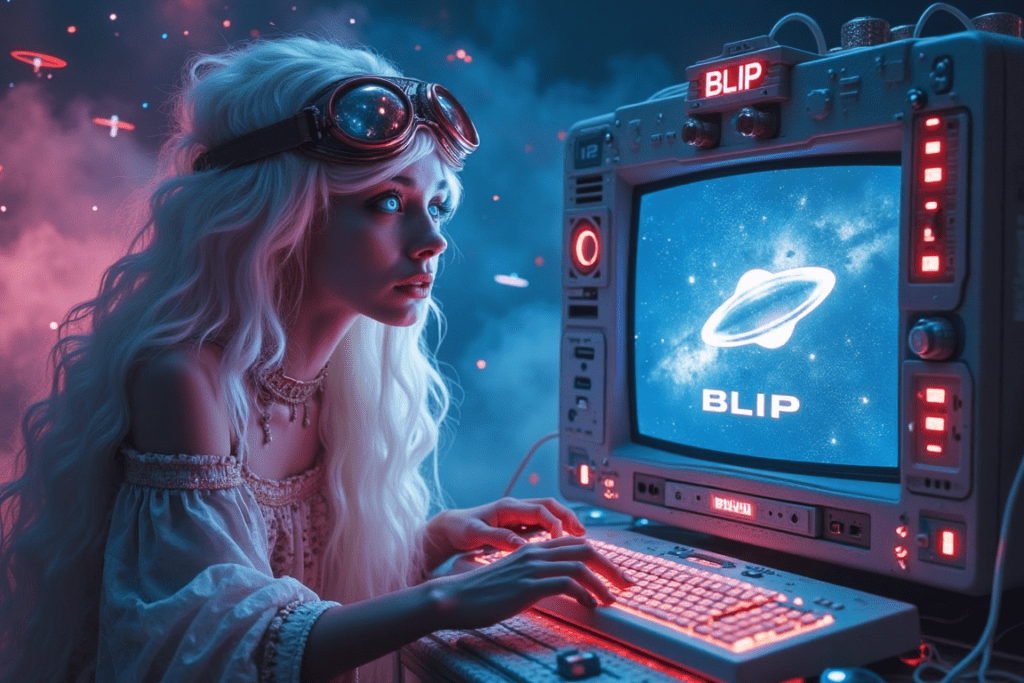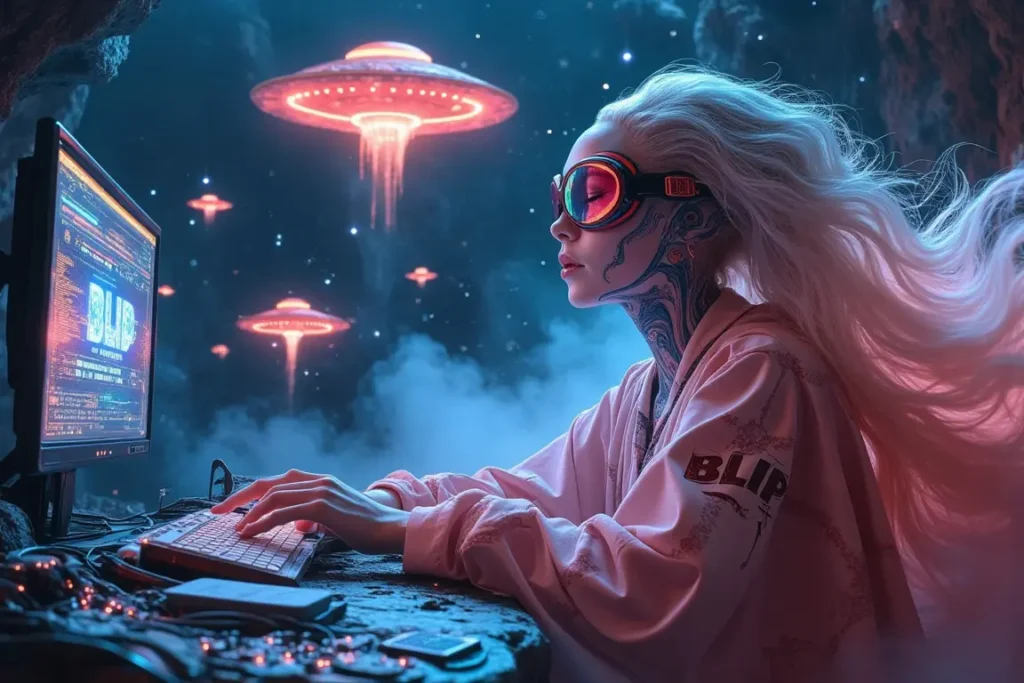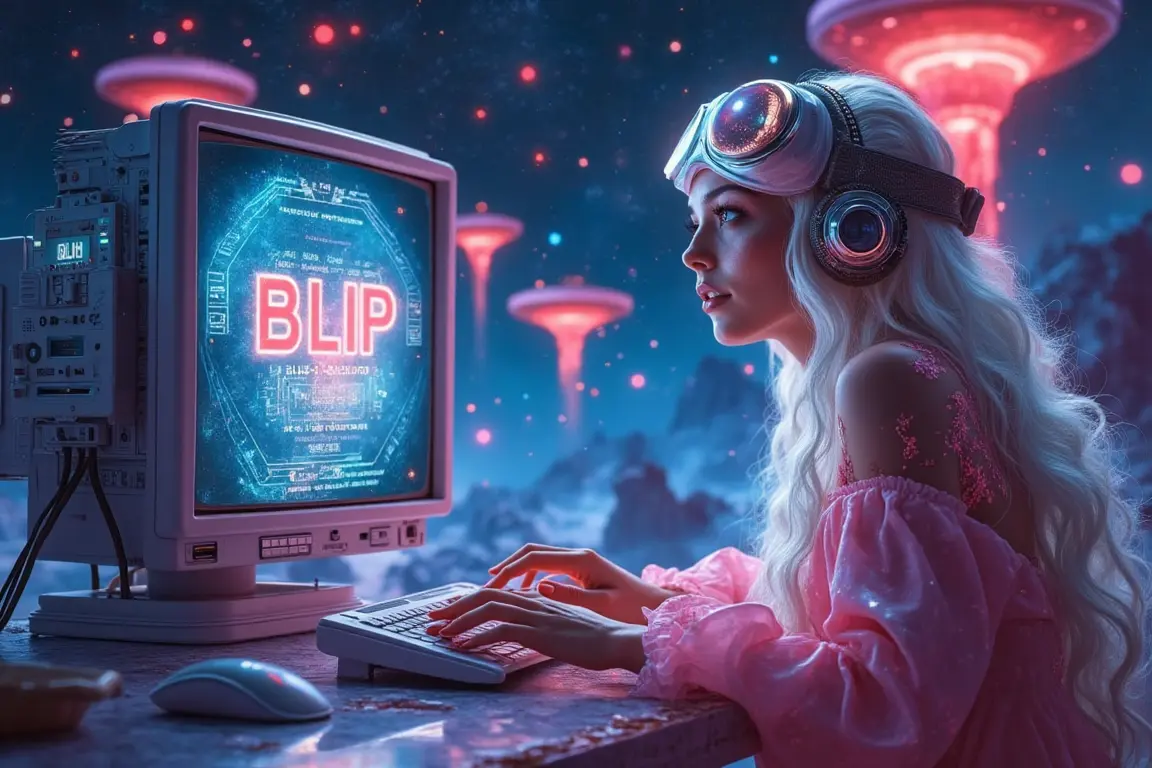Ever wished your old computer could do something really cool? Something that could boost your website’s SEO, make the internet a more accessible place, and save you tons of time? Get ready to dust off that trusty machine because BLIP – the Bootstrapped Language-Image Pre-training model – is here to turn it into an alt-text generating powerhouse!
Introduction: The Image Accessibility Revolution is Here (And It Runs on Your Old PC!)
In a world overflowing with images, ensuring they’re accessible to everyone and easily discoverable by search engines is no longer optional; it’s essential. BLIP, a cutting-edge AI model, is designed to do just that: create intelligent and descriptive alt-text tags for your images. The best part? You don’t need a supercomputer! You can run BLIP effectively on a standard computer, even an older one, bringing the power of AI accessibility to the masses. Let’s dive in and see how!
What Exactly Is BLIP? (Think of it as an AI Art Critic)
BLIP (Bootstrapped Language-Image Pre-training) isn’t just another AI model; it’s a smart combination of computer vision and natural language processing (NLP). Imagine it as an AI art critic that can instantly analyze an image and write a detailed, relevant caption. Developed by researchers at Microsoft, BLIP has been trained on massive datasets of images and text, allowing it to understand the complex relationships between the visual and the verbal. Specifically, BLIP employs a unique architecture involving a multimodal mixture of experts, enabling it to handle various vision-language tasks effectively. This architecture allows BLIP to learn from both image and text data simultaneously, enhancing its ability to generate accurate and contextually relevant descriptions for a wide range of images. The pre-training phase involved exposing BLIP to millions of image-text pairs, fine-tuning its understanding of visual content and linguistic nuances. This extensive training is what allows BLIP to generate such accurate and descriptive alt-text.
Alt-Text: The Unsung Hero of the Internet (And Why You Should Care!)
Okay, let’s talk about alt-text. You might think it’s a small detail, but it’s actually a HUGE deal. Here’s why:
- Accessibility: The Golden Rule of the Web: Imagine navigating the internet without being able to see images. Alt-text is your lifeline. It allows screen readers to describe the images to visually impaired users, making your website inclusive and compliant with accessibility guidelines (like WCAG). Creating accessible content isn’t just good practice; it’s the right thing to do. WCAG, or Web Content Accessibility Guidelines, provides a set of internationally recognized recommendations for making web content more accessible. By adhering to WCAG standards, websites can ensure that users with disabilities, including visual impairments, can perceive, understand, navigate, and interact with their content. Providing descriptive alt-text is a key component of WCAG compliance.
- SEO Supercharge: Get Your Images Found! Search engines can’t “see” your images (not in the same way we do). They rely on alt-text to understand what’s in them. By providing descriptive alt-text, you’re essentially giving search engines the key to unlock your images and boost your website’s visibility in search results. Better alt-text = better SEO = more organic traffic. It’s that simple! Search engines like Google utilize alt-text to index images and understand their relevance to search queries. When a user searches for a specific image, the search engine will analyze the alt-text to determine if the image matches the user’s intent. Therefore, well-crafted alt-text that accurately describes the image can significantly improve its chances of appearing in search results, driving more organic traffic to your website.
- The Backup Plan: When Images Fail, Alt-Text Saves the Day! Slow internet connection? Technical glitch? Images sometimes fail to load. Alt-text ensures that your users still understand the content, even if the image is missing. It provides context and prevents frustration, leading to a better user experience. Moreover, alt-text can improve the overall user experience by providing context for images that may be unclear or ambiguous. By offering a brief description of the image’s content, alt-text can help users understand its purpose and relevance to the surrounding text, even if the image itself is not immediately clear.
Turning Your Old PC into an Alt-Text Factory: A Step-by-Step Guide to Installing and Running BLIP
Alright, let’s get practical! Here’s how to transform your local machine into an AI-powered alt-text generator. Don’t worry; it’s easier than you think!

Step 1: Is Your Machine Up to the Task? (The Minimum Requirements)
Before we start, let’s make sure your system meets the basic requirements. Even an older machine can handle BLIP, but here’s what you’ll need:
- Operating System: Windows, macOS, or Linux (BLIP plays well with everyone!)
- Processor: Pentium Core i5 or equivalent (Think of this as the brainpower)
- RAM: 8GB or more (This is the short-term memory, needed to handle the AI calculations)
- Storage: At least 10GB of free disk space (Room for BLIP to stretch its legs)
- Python: Version 3.6 or higher (The programming language that makes BLIP tick)
Step 2: Installing the Necessary Tools (Python Packages to the Rescue!)
BLIP relies on a few helpful Python libraries to do its magic. Open your terminal or command prompt and run these commands one at a time:
pip install torch torchvision transformers
pip install pillow numpy
(Pro Tip: Consider using a virtual environment to keep your Python dependencies organized. Google “Python virtual environment” for a quick tutorial!)
These commands will install:
- PyTorch and Torchvision: The powerful deep learning frameworks. PyTorch provides the core functionalities for building and training neural networks, while Torchvision offers a collection of datasets, model architectures, and image transformations commonly used in computer vision tasks. Together, these libraries provide a comprehensive toolkit for developing and deploying AI models like BLIP.
- Transformers: Hugging Face’s library for working with pre-trained models (like BLIP). The Transformers library simplifies the process of using pre-trained models by providing a unified API for loading, configuring, and fine-tuning various models. It also includes pre-trained weights for BLIP, allowing you to quickly and easily integrate the model into your Python code.
- Pillow: For image processing.
- NumPy: For numerical calculations. NumPy is a fundamental library for scientific computing in Python, providing support for large, multi-dimensional arrays and matrices, as well as a wide range of mathematical functions to operate on these arrays. BLIP utilizes NumPy for various numerical operations, such as image resizing, normalization, and data manipulation.
Step 3: Bringing BLIP Home (Cloning the Repository)
Now it’s time to download the BLIP model from the official repository on GitHub. Type the following commands into your terminal:
git clone https://github.com/microsoft/BLIP.git
cd BLIP
This will download the BLIP code to your computer and then navigate you into the BLIP directory. Cloning the repository ensures that you have access to all the necessary files and scripts to run BLIP, including the model weights, configuration files, and example code. The cd BLIP command changes your current directory to the BLIP directory, allowing you to execute the Python scripts in the correct context.
Step 4: Waking Up the AI: Loading the BLIP Model
Create a new Python file (e.g., load_blip.py) and paste the following code into it:
import torch
from transformers import BlipProcessor, BlipForConditionalGeneration
# Load the BLIP processor and model
processor = BlipProcessor.from_pretrained("microsoft/blip")
model = BlipForConditionalGeneration.from_pretrained("microsoft/blip")
# Check if CUDA is available and use GPU if possible
device = torch.device("cuda" if torch.cuda.is_available() else "cpu")
model.to(device)
print("BLIP model loaded successfully!") # Added confirmation message
Save the file and run it from your terminal: python load_blip.py. This will load the BLIP model. The “BLIP model loaded successfully!” message confirms that everything is working correctly. The BlipProcessor is responsible for preparing the input data for the BLIP model, including resizing the image, normalizing its pixel values, and converting it into a format that the model can understand. The BlipForConditionalGeneration is the actual BLIP model, which takes the preprocessed image as input and generates the alt-text description.
Step 5: Generating Alt-Text: Let BLIP Work Its Magic!
Create another Python file (e.g., generate_alt_text.py) and add the following code:
from PIL import Image
# Load and preprocess the image
image_path = "path/to/your/image.jpg" # **IMPORTANT: Replace with the actual path to your image!**
image = Image.open(image_path)
inputs = processor(images=image, return_tensors="pt").to(device)
# Generate the alt-text tag
outputs = model.generate(**inputs)
alt_text = processor.decode(outputs[0], skip_special_tokens=True)
print("Generated Alt-Text:", alt_text)
Important: Replace "path/to/your/image.jpg" with the actual path to your image file on your computer.
Save the file and run it: python generate_alt_text.py. The script will load the image, process it, and print the generated alt-text tag to your terminal! Congratulations, you’ve just used BLIP to generate alt-text! The Image.open() function from the Pillow library opens the image file specified by the image_path variable. The processor() function then preprocesses the image, preparing it for input to the BLIP model. The model.generate() function generates the alt-text description, and the processor.decode() function converts the output of the model into a human-readable string.

BLIP on a Budget: Optimizing for Older Hardware (Making the Most of What You’ve Got)
Okay, let’s be honest. Running AI models can be demanding, especially on older hardware. But don’t worry, here are some tricks to optimize BLIP for your machine:
- Reduce Batch Size: Think of “batch size” as how many images BLIP processes at once. Lowering it reduces memory usage. However, the code provided does not use batch processing and processes one image at a time.
- Embrace the CPU (It’s Still Got It!): If you don’t have a dedicated graphics card (GPU), BLIP will run on your CPU. It might be a bit slower, but it will still produce accurate results. The code already handles this automatically.
- Image Resizing: Smaller Images, Faster Processing: Resize your images to a smaller resolution before processing them. This significantly reduces memory usage and processing time. Add this line before the
inputs = processor(...)line:image = image.resize((512, 512)) # Or even smaller, like (256, 256)Experiment with different sizes to find the sweet spot between speed and accuracy. - Gradient Accumulation: For more advanced users, consider implementing gradient accumulation, which allows you to simulate a larger batch size without exceeding your memory limits. This requires modifying the training loop and is beyond the scope of this basic guide, but it’s worth researching.
- Model Quantization: Convert the model to a lower precision format. This can reduce memory usage and improve inference speed. Model quantization involves converting the model’s weights and activations from floating-point numbers to integers, which requires less memory and can be processed more quickly on CPUs. PyTorch provides tools for quantizing models, which can significantly improve their performance on older hardware.
Sourcing Images Like a Pro: Beyond Stock Photos
Where do you get the images you need to generate alt-text for? Here are a few ideas to get you started:
- AI-Powered Image Generation: Unleash your creativity with multimodal models like Janus-Pro! Simply prompt it with a description of the image you want, and let the AI generate a unique visual for you.
- Web Scraping with Precision: Tools like Puppeteer and Selenium allow you to automate the process of finding images on the web based on specific keywords. This is perfect for gathering images for specific niches or topics.
- Janus-Pro: The Aesthetic Filter: Use Janus-Pro’s advanced capabilities to not only generate images, but also to evaluate their aesthetic quality. Have it select only the most visually appealing images, discarding those that don’t meet your standards. This ensures that you’re working with high-quality visuals that will engage your audience. Remember to respect copyright and usage rights when sourcing images from the web!
Real-World BLIP Magic: Where Can You Use This?
BLIP’s ability to generate alt-text opens up a world of possibilities:
- Website Accessibility Audits: Quickly identify images on your website that are missing alt-text and generate descriptions for them.
- E-commerce Product Descriptions: Create compelling and informative descriptions for your product images, boosting sales and improving the customer experience.
- Content Creation Workflow: Automate the process of adding alt-text to images in your blog posts, articles, and social media content. Need to train an employee to type new alt-tags compliant with the latest search engine algorithms? Your old computer can do it for free!
- Educational Resources: Make images in educational materials accessible to all students.
- Social Media Engagement: Generate engaging captions for your social media posts, making your content more discoverable and accessible. Furthermore, using BLIP to generate alt-text for social media images can improve the accessibility of your content to users with visual impairments, as well as enhance its discoverability through search engines. By providing descriptive alt-text, you can ensure that your social media posts are more inclusive and engaging for all users.
Ready to Transform Your Old PC into an AI Alt-Text Superhero?
We’d love to hear about your experiences with BLIP! If you give this a try, let us know how things worked out. Share your results, insights, and any tips you discovered along the way. Together, we can build a more accessible and SEO-friendly web, one image at a time.
Join the Conversation: Leave a comment below or reach out to us on social media. Your feedback helps us improve and inspires others to take the plunge into the world of AI-powered alt-text generation.
Let’s make the internet a better place, one alt-text tag at a time!
Conclusion: The Future of Accessibility is in Your Hands (Literally!)
BLIP empowers you to create a more accessible and SEO-friendly web, one image at a time. And the best part is, you can do it all on your existing hardware! Whether you’re a web developer, content creator, marketer, or just someone who cares about making the internet a better place, BLIP is a tool you need in your arsenal.
So, go ahead, dust off that old computer, install BLIP, and start generating alt-text tags for your images today. The future of AI-powered image descriptions is here, and it’s more accessible than ever before. Let’s build a more inclusive and discoverable web, together!

